
OUR BUSINESS
OUR BUSINESS


SANBS embraces risk and opportunity management as an essential enabler for setting and achieving its strategic objectives and purpose of being ‘Trusted to Save Lives’.
Risk management is governed by an Enterprise Risk Management (ERM) Framework which provides a solid foundation to guide the organisation in embedding structured risk management processes to deliver sustained value.
Through the ERM process, risks and opportunities, which could affect the achievement of our iHEALTh strategy, are identified and managed within defined risk appetite and tolerance levels set by the Board. Management decisions to tolerate, treat, terminate or share risks and opportunities are taken based on these parameters.
As an essential healthcare service provider, it is prudent that SANBS protects its donors, patients and stakeholders from the potential adverse effects of risk and has therefore adopted a conservative risk approach.
SANBS follows an iterative and dynamic risk management process to ensure ongoing identification and evaluation of risks and opportunities in response to a continually evolving and rapidly changing internal and external environment. Risks and opportunities are also identified through stakeholder engagement.
Oversight of risk management is the responsibility of the Risk, Technology and Information Governance Committee.
SANBS embraces risk and opportunity management as an essential enabler for setting and achieving its strategic objectives and purpose of being ‘Trusted to Save Lives’.
Risk management is governed by an Enterprise Risk Management (ERM) Framework which provides a solid foundation to guide the organisation in embedding structured risk management processes to deliver sustained value.
Through the ERM process, risks and opportunities, which could affect the achievement of our iHEALTh strategy, are identified and managed within defined risk appetite and tolerance levels set by the Board. Management decisions to tolerate, treat, terminate or share risks and opportunities are taken based on these parameters.
As an essential healthcare service provider, it is prudent that SANBS protects its donors, patients and stakeholders from the potential adverse effects of risk and has therefore adopted a conservative risk approach.
SANBS follows an iterative and dynamic risk management process to ensure ongoing identification and evaluation of risks and opportunities in response to a continually evolving and rapidly changing internal and external environment. Risks and opportunities are also identified through stakeholder engagement.
Oversight of risk management is the responsibility of the Risk, Technology and Information Governance Committee.
Our material matters are reflected in our key risks and opportunities and represent the issues that have the most impact on our ability to create sustainable value for our stakeholders and influence our business model.
Of significance during the reporting period are:




Our material matters are reflected in our key risks and opportunities and represent the issues that have the most impact on our ability to create sustainable value for our stakeholders and influence our business model.
Of significance during the reporting period are:




Benefits Derived from Practising Good Risk Management
Benefits Derived from Practising Good Risk Management